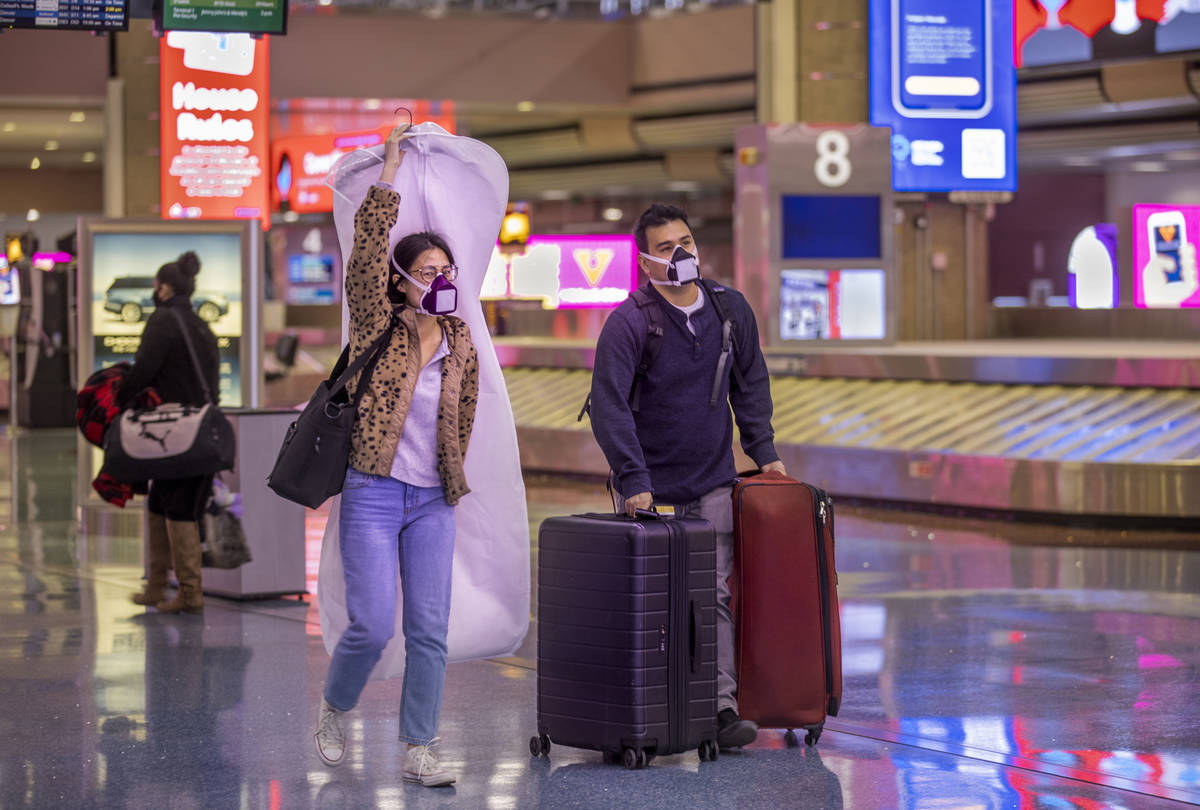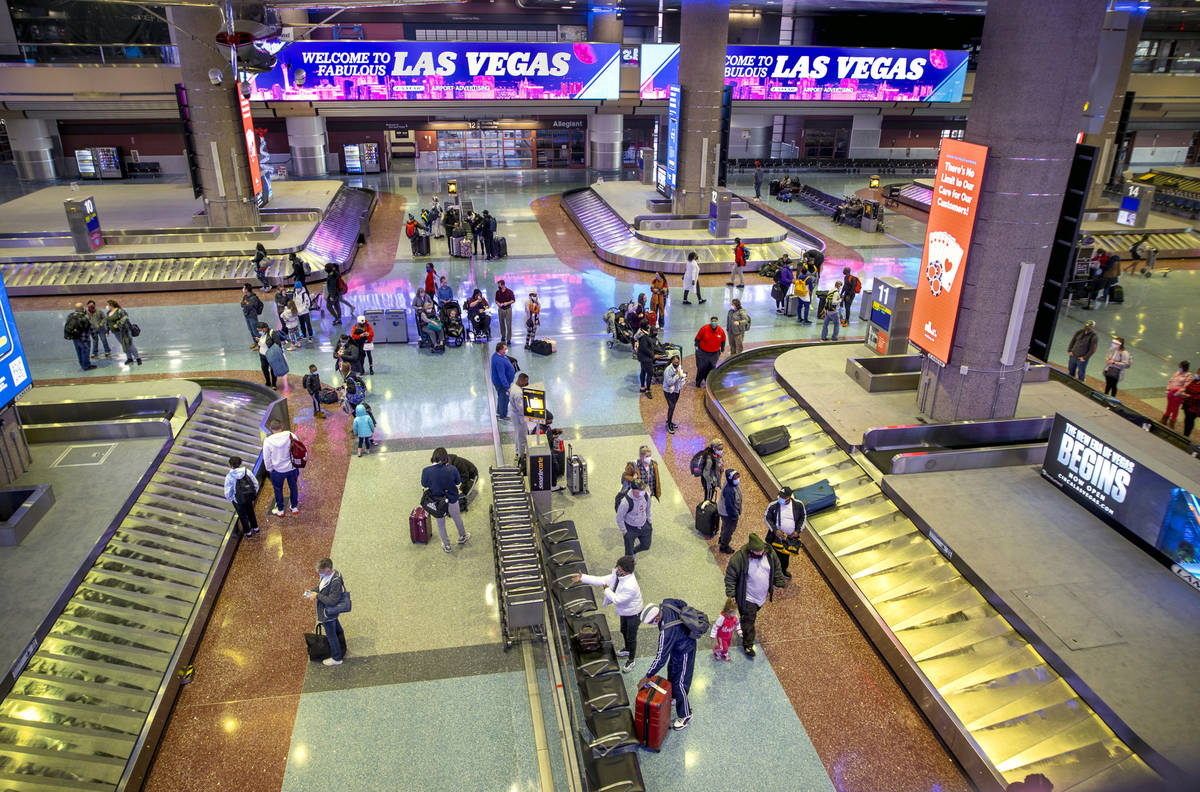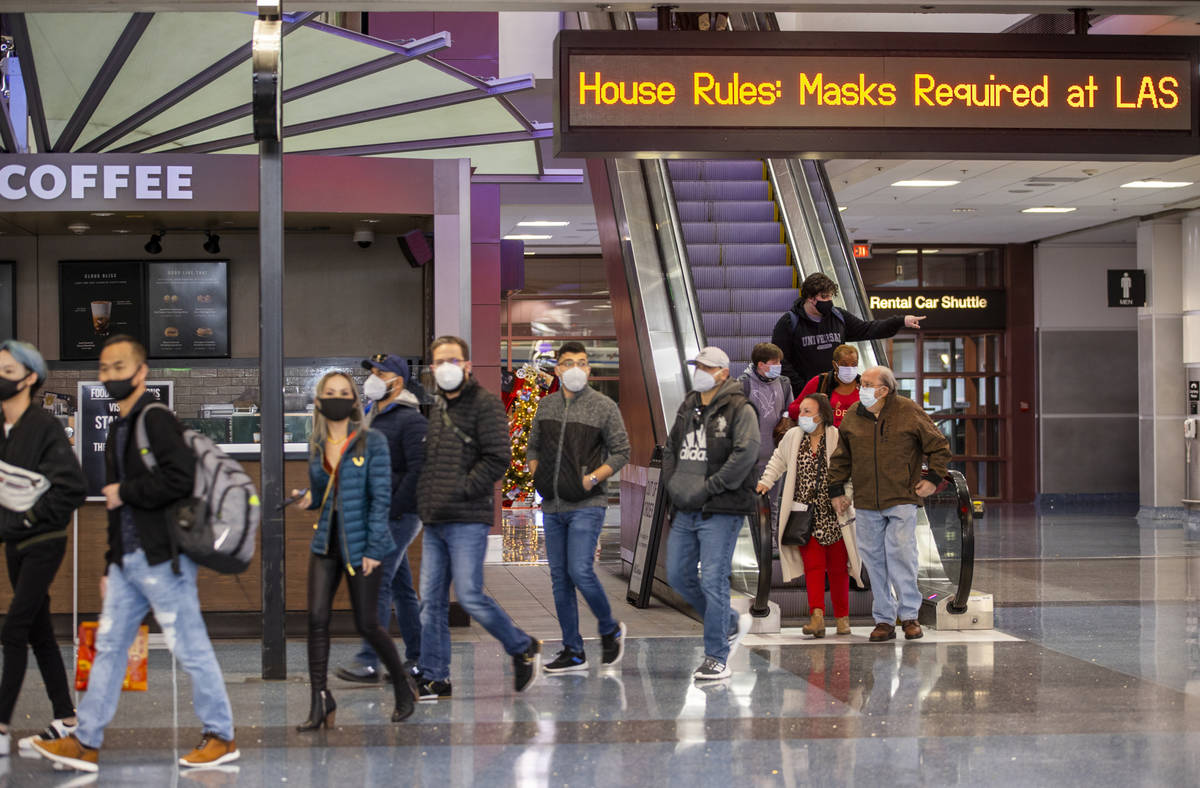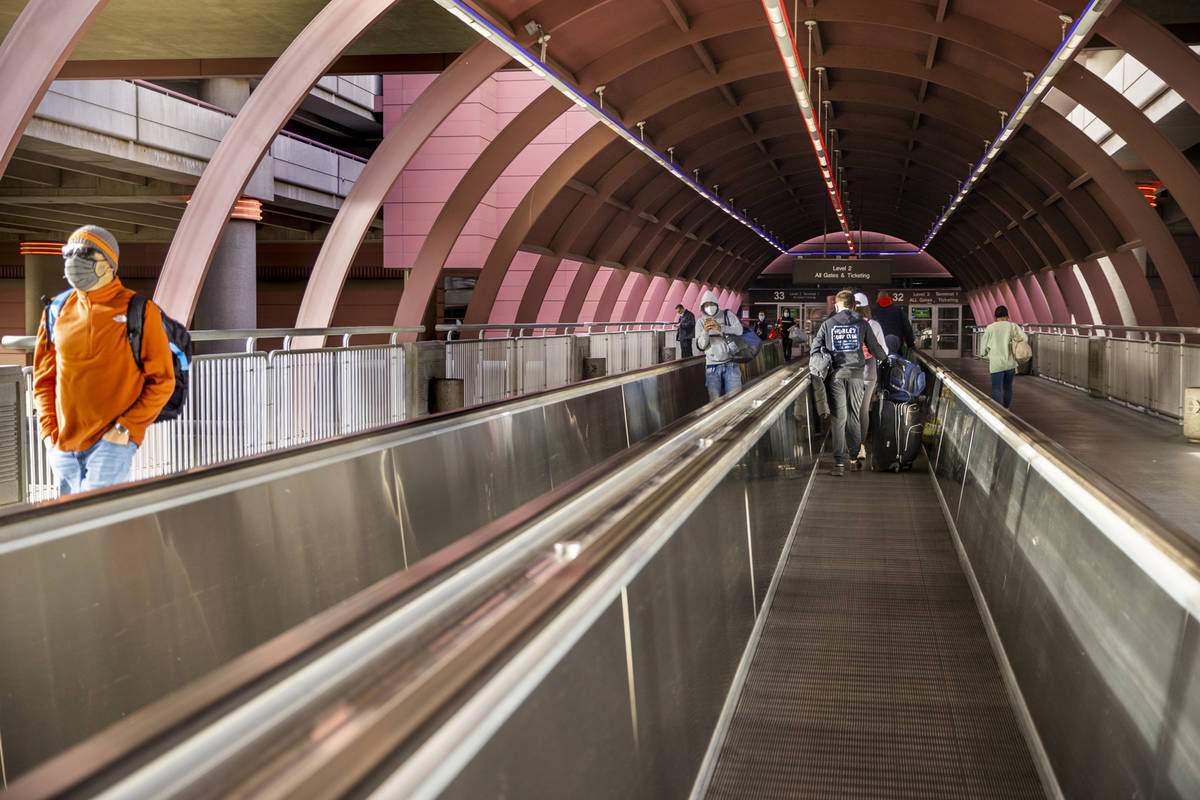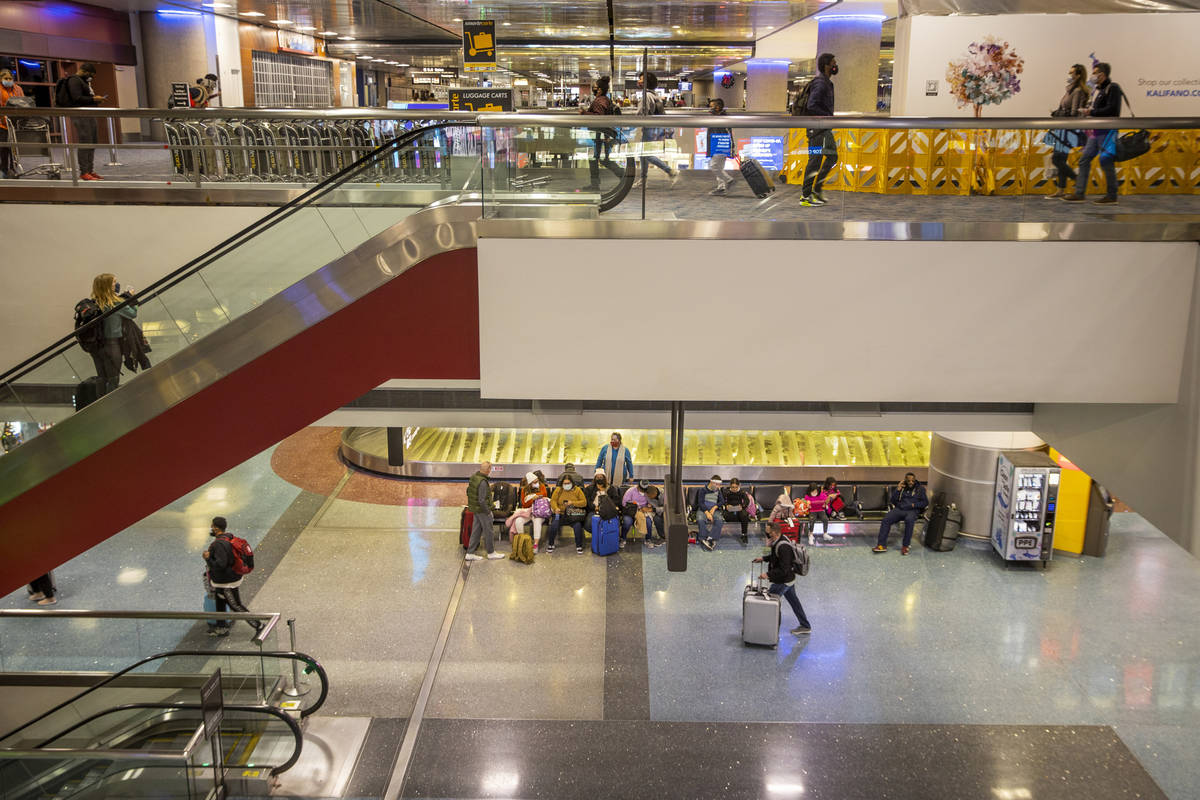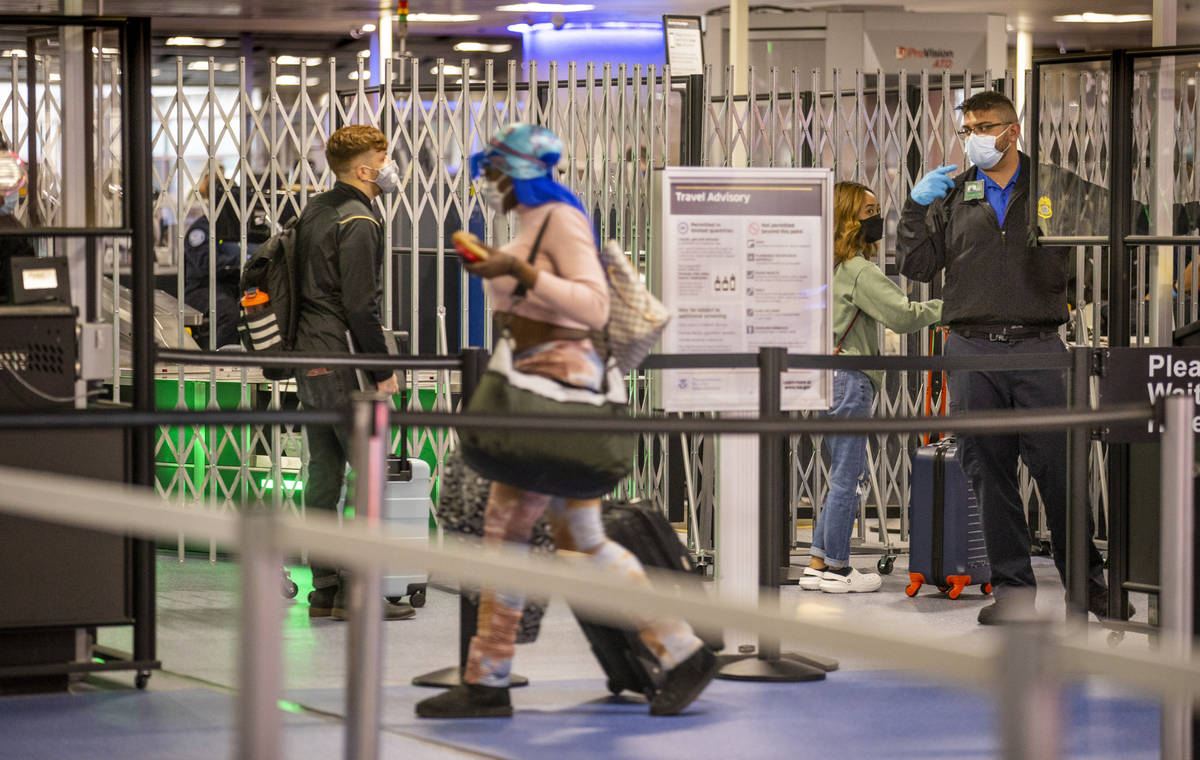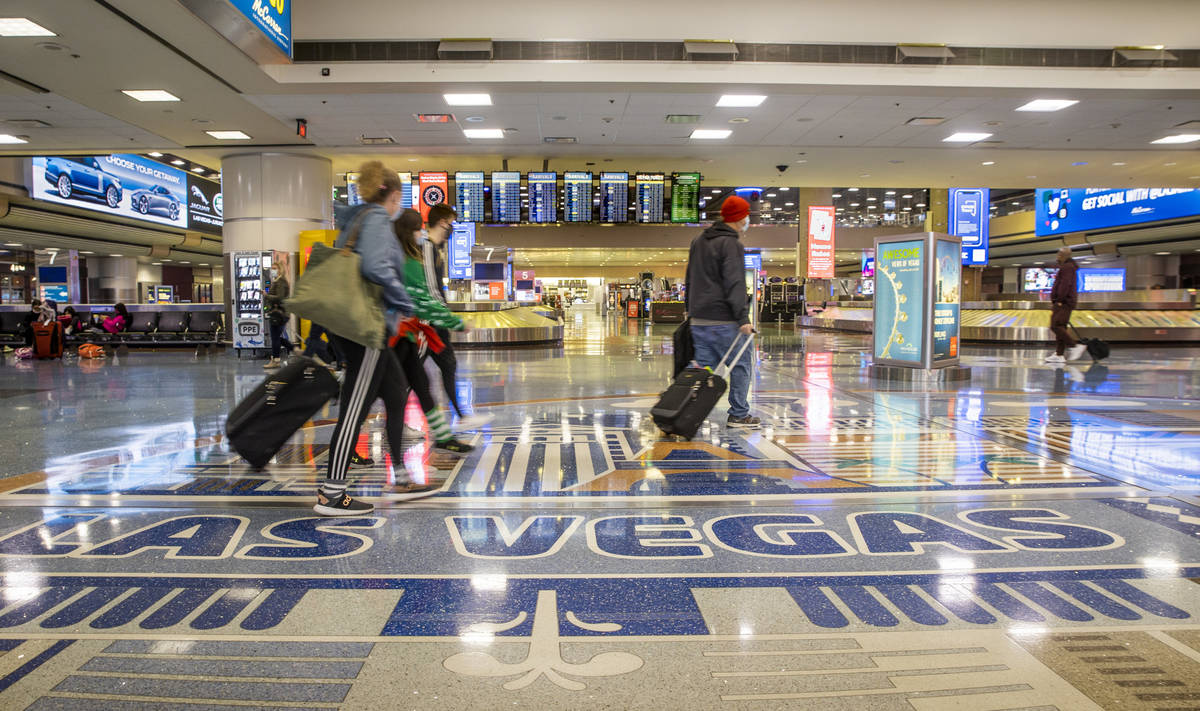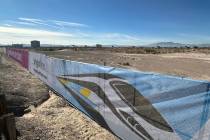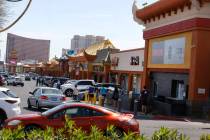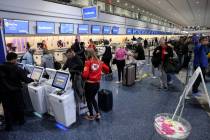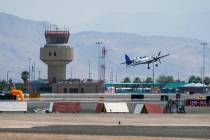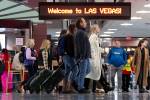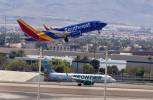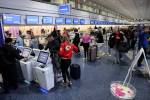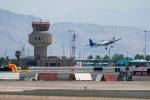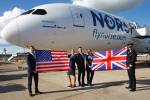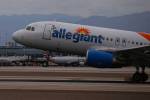McCarran aiming to regain momentum lost when pandemic hit US
Through the first 10 weeks of 2020, the number of passengers passing through McCarran International Airport was on pace to shatter 2019’s record-breaking 51.5 million passenger count.
Then the pandemic brought that momentum to a crashing halt.
In mid-March, when Gov. Steve Sisolak mandated a stay-at-home order and closed resorts and other businesses in Las Vegas to slow the spread of the coronavirus, visitor volume nearly flatlined.
In April, the first full month after the closures, passenger volume at McCarran dropped to 152,716, the lowest count in recent history at the airport and a 96 percent decrease from the same month in 2019, according to Joe Rajchel, McCarran spokesman.
“The airlines were unable to adjust their schedules immediately, so for a time flights still operated, but with very few passengers on board,” Clark County Director of Aviation Rosemary Vassiliadis said. “Many scheduled flights did not operate at all.”
The precipitous drop in passenger traffic has taken its toll. Airlines slashed their workforce because of the unpredictable demand. Some retail and food and beverage outlets closed their doors. Many more laid off workers. And McCarran is set to lose $312 million in revenue.
Nine months later, McCarran’s passenger traffic has started to inch higher but remains a fraction of what it was pre-pandemic. The wave of tourists that fuels Las Vegas’ economy has yet to return in force, affecting the fortunes of the airport, the businesses that operate there and those throughout the valley.
Las Vegas Convention and Visitors Authority spokeswoman Lori Nelson-Craft said there is a direct correlation between Las Vegas’ visitor volume and air service levels into McCarran.
“As the vaccine becomes widely distributed, more people will begin to travel again,” Nelson-Craft said. “The pent-up demand for the incomparable Las Vegas experience will grow, and that should translate into McCarran International Airport seeing an increase in passenger levels.”
Plummeting travel demand
Since April 1, the number of seats booked in and out of Las Vegas declined by about 50 percent compared with the same period last year, Vassiliadis said.
“A year ago during those nine months, airlines operated 45.4 million seats in and out of LAS (McCarran); during the same span this year, published schedules show just 23.4 million seats in and out,” Vassiliadis said.
International travel took the biggest hit as all international flights were canceled within weeks of the COVID-19 pandemic impacting Las Vegas.
“We went from close to two dozen international markets in Asia, Europe, Central America, North America and the Middle East down to zero,” Vassiliadis said.
International travel is still minimal at McCarran. As of Dec. 17, only three flights to Mexico and one route from Canada were available.
With many conventions slated for Las Vegas either canceled or switched to virtual events, business travel to Las Vegas also was hit hard.
Last year, business travel accounted for 6.6 million Las Vegas visitors, about 70 percent of whom traveled by air. With no major shows occurring in Las Vegas this year, business travel is nearly nonexistent.
McCarran’s recovery to date suggests Las Vegas air travel is now greatly reliant upon leisure, weekend visitors.
Highlighting that trend, Transportation Security Administration checkpoints at McCarran were 75 percent busier on Sundays and Mondays in November than on other days of the week. Through the first half of December, Sunday-Monday volume is tracking nearly double that of the other days of the week, according to McCarran.
Airport operations
When passenger traffic plummeted in the spring, the shops and restaurants at McCarran suffered, as did the airlines that serve the airport.
Airlines and concessionaires at McCarran reported significant furloughs and layoffs as over 2,100 workers were out of jobs in varying waves.
Of those, 940 were from McCarran concessionaires, with the rest made up of mainly pilots, flight attendants and other staff with Allegiant Air, Frontier Airlines, United Airlines and Spirit Airlines.
Maury Gallagher, Allegiant Air CEO, said the carrier was looking at a record year in early 2020 before the the full impact of the pandemic was felt. In January, Allegiant made its largest route announcement in company history, adding three new cities and 44 new routes.
But two months later, after the pandemic was officially declared in the U.S., travel demand decreased sharply, halting the company’s momentum. Las Vegas-based Allegiant saw just 199 passengers in April, compared with 199,359 passengers in April 2019.
“We, along with other airlines, faced an operational environment never before experienced in the history of commercial aviation,” Gallagher said. “But aviation is an essential service, so we knew early on we would have to adapt and find ways to ensure our customers could fly with confidence when they needed to. We implemented several policies and procedures that, along with our unique business model, have helped us navigate the pandemic and position us for a quick recovery once demand for leisure travel returns.”
Allegiant and McCarran have seen their passenger numbers increase since the lows of the spring, though they still trail 2019 numbers. In October, the latest month for which figures are available, McCarran recorded 1.98 million passengers, down 57 percent from a year ago. Meanwhile, Allegiant saw 111,128 passengers, down 41 percent from October 2019 but a significant increase from the lows of the spring.
The drop in passengers also slammed McCarran’s retail and food and beverage outlets. At the beginning of April, 57 of 175 airport shops or restaurants were open; as of Dec. 17, that number had risen to 114.
The closures are concentrated in the C Concourse, where a recently started renovation project kicked off, and within Terminal 3, where the E Gates are not in use as a cost containment measure.
According to Vassiliadis, just one tenant, which had two locations at McCarran offering foreign currency exchange services, has closed permanently because of the pandemic.
The Department of Aviation has not laid any off any full-time employees, but it has implemented a hiring freeze. Also, employees across all departments accepted reduced pay because of adjusted work schedules.
There were 93 airport employees who opted into Clark County’s voluntary separation program in July and August. Combined with normal attrition, the Department of Aviation reduced its workforce from 1,500 full time employees in early March to 1,350.
“As an around-the-clock operation with multiple airports, terminals and concourses there are staffing thresholds necessary to maintain minimum service levels for airport users,” Vassiliadis said. “We will continue to seek ways to maximize efficiencies while keeping operating costs as low as possible. The length of time associated with a return to our normal air passenger (traffic) will determine future actions.”
McCarran is on track to lose $312 million in revenue because of the pandemic.
The airport lost $113 million in fiscal year 2020, which ended June 30, and projects losing $199 million in fiscal year 2021. Those losses will be partially offset by $196 million in CARES Act funding McCarran received this year, leaving the airport with a $116 million shortfall.
That projected loss could be offset more after Congress passed another round of stimulus Monday totaling over $900 billion. But by how much is not yet known, Vassiliadis said.
“While the exact amount we will receive is still unknown, we are grateful to Nevada’s congressional delegation for helping U.S. airports secure additional support in the COVID-19 relief bill,” she said.
Sen. Catherine Cortez Masto was one of the state’s biggest advocates in pushing for the additional assistance, according to Vassiliadis.
Cortez Masto had hoped to see a new economic stimulus package passed earlier, but the measure encountered opposition in the Senate.
“It should have been done already,” Cortez Masto said. “There is a need, and it should be done by the end of the year.”
Future projects
The impact of the pandemic has put a number of projects on hold at McCarran.
“Cost containment is the priority so we are looking at every expenditure and asking, ‘Is this operationally necessary at this time?’” Vassiliadis said. “If it is not, we set the job aside for a time.”
Some projects at McCarran have continued, mainly due to the availability of one-time federal funds.
McCarran already had the $13 million needed for the C Concourse renovations set aside prior to the pandemic and the current circumstances give the airport the ability to perform that work faster and for less money.
Starting the project in late September allowed workers to take advantage of the lower passenger volume as Southwest Airlines, the principal tenant, didn’t need to move 40,000 to 50,000 passengers in and out of those gates each day.
Early planning for the proposed Southern Nevada Supplemental Airport project, commonly referred to as Ivanapah Airport, is continuing despite the pandemic. Initial studies were funded and underway as the pandemic hit and the environmental impact statement process is about to commence.
“This remains a long-term project and the current economic cycle will not curtail our efforts to prepare for the airport’s eventual development,” Vassiliadis said. “We cannot break ground until the EIS is completed and a favorable record of decision is in hand. Once we clear those steps, we can re-evaluate the timing of the project’s development based on current and forecasted business conditions.”
When will travel rebound?
When travel will return to pre-COVID numbers is up in the air.
Varying estimates have been given for when that may occur, with the International Air Transport Association suggesting early 2024. Analysts at J.P. Morgan said 2022 at the earliest, and Goldman Sachs said 2023.
“This is impossible to predict,” Vassiliadis said. “Historically Las Vegas has come out of economic downturns more quickly than most other markets, but we cannot put a definitive timeline on this recovery just yet.”
The development and successful implementation of a coronavirus vaccine is something that could help speed up travel’s return. But returning to Las Vegas’ pre-pandemic numbers could prove to be a tough draw.
“Keep in mind 2019 was a record-high year for McCarran — we had never exceeded 50 million in a calendar year until we reported at 51.5 million passengers last year.”
Contact Mick Akers at makers @reviewjournal.com or 02-387-2920. Follow @mickakers on Twitter.



